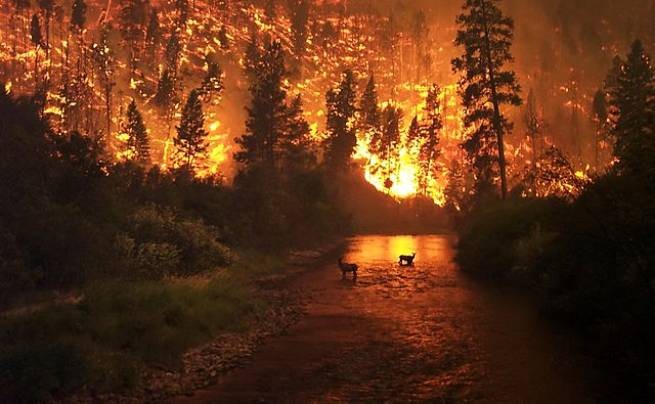The results of a large-scale study showed that forest fires release chemicals from the soil that can cause cancer.
Heat from forest fires can turn metals naturally found in the soil into dangerous particles that cause diseases, including cancer. For example, writes CNN, Heat from a fire can transform chromium(III) oxide from a benign form into a carcinogen, chromium 6 oxide, which can cause organ damage, cancer and other health problems.
Chromium is widely distributed in soils in the western United States, Australia and Brazil, Europe, Indonesia and South Africa. Findings from a previous study in Australia suggested that the intense heat of bushfires could trigger this kind of metal transformation.
The scientists then decided to collect samples from chromium-rich soils in four ecological reserves that were burned by wildfires in 2019 and 2020 along the Northern California coast. They tested the soil in both areas destroyed by the fire and those not affected, collecting tiny particles that might have become airborne.
In chromium-rich areas where vegetation allowed fires to spread intensely, research Scientists found a sevenfold increase in levels of toxic chromium oxide compared to levels in areas not affected by the fire.
Researchers warn that even after the fire is completely contained, local communities may still be vulnerable to strong winds that can carry fine soil particles containing toxic chromium. However, they say, including study co-author and professor Scott Fendorf, health risks are reduced after metal-washing rain. But the problem is that sometimes rain after a fire can be expected for weeks and months, especially given climate change and the frequency of droughts in this regard.
At the time the soil samples were taken, California was experiencing a multi-year drought. Even a year after the fires, researchers found that toxic chromium remained in the soil and continued to pose a health risk to nearby communities.
This research complements There is growing evidence of the dangerous effects of wildfire smoke, which also carries fine particulate matter, or PM 2.5, a toxic chemical. When inhaled, it can penetrate deep into the lung tissue and even enter the bloodstream. PM 2.5 is associated with diseases such as asthma, chronic bronchitis, heart disease, and various respiratory diseases.
Scientists suspect that other metals – nanoparticles of manganese, nickel and iron – may pose similar threats to human health, but more research is needed to be sure.
Forest fires serve a vital ecological purpose. They increase soil nutrients and remove rotting matter. Without these fires, overgrown foliage, grass and shrubs can prepare the landscape for even more severe outbreaks. But as the climate crisis worsens drought and extreme heat, wildfires are burning longer and expanding.
A recent UN report predicts that the number of extreme wildfires will increase by 30% by 2050, even with ambitious efforts to reduce the rate of pollution. Fendorf emphasizes: “This is a wake-up call because more frequent fires mean we will be exposed to even more toxic substances.”







More Stories
Where will Greeks go for Easter: the best domestic and foreign destinations
Fine 1200 euros for the bad habit of Greeks at Easter, who is at risk
UK: human trial of melanoma vaccine started